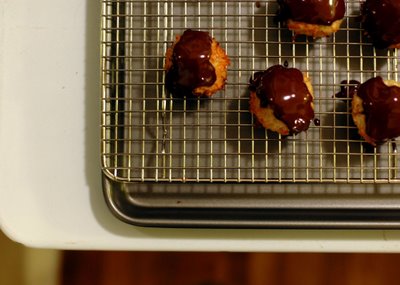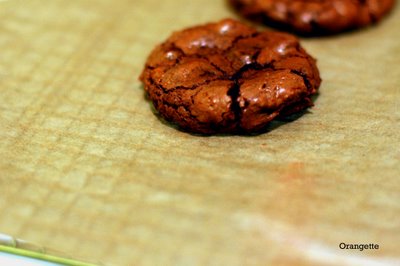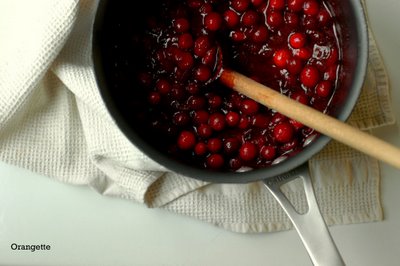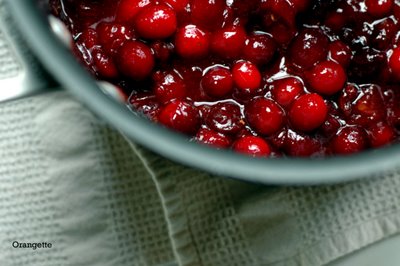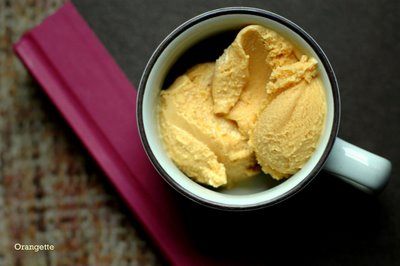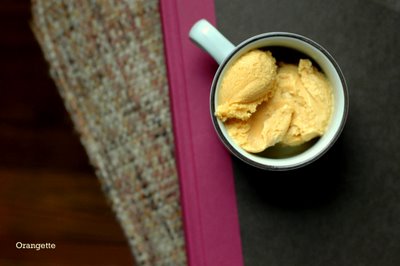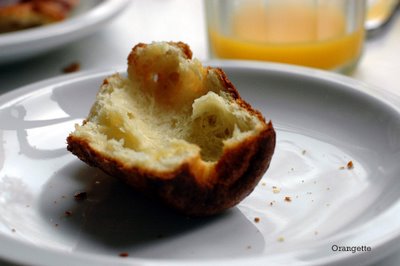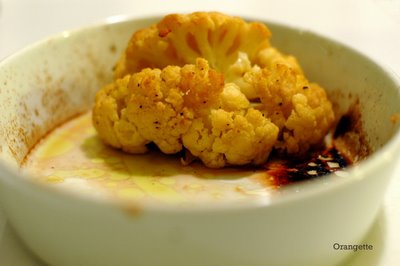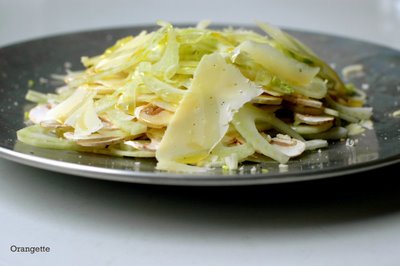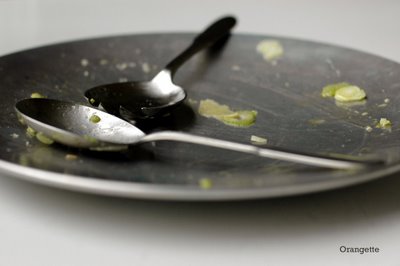Friends, grab a
stash of cookies and pull up a chair, because we have to talk.
I’m a little funny about heavy cream. This probably makes me a total killjoy, but I can’t help it. My mother is this way too, so maybe I get it from her. Cream soups and sauces upset her stomach, and by some sort of sad, unlucky inheritance, the same goes for mine. By way of illustration, take the tragic case of the
velouté de potimarron - a velvety pumpkin soup - that I once ordered at a bistro in Paris. As soon as it arrived at the table, I knew I was doomed: it coated the spoon like
clotted cream, and its color tended more toward white than any shade of winter squash. I took three bites before my stomach did a flip-flop. Of the remainder of the evening, the only good thing I remember is the man sitting next to me, who leaned into my ear and breathed,
en français, “You remind me of
Cleopatra.” (I was hitting the smoky,
kohl-black eye makeup pretty hard back then.) For a pale-skinned, blue-eyed American girl with red hair, that was dreamy. The cream in that soup, however, was not.
As a kid, the only form of cream I knew well was the whipped kind, beaten in a chilled bowl with a dribble of vanilla and served alongside dessert. I also knew that my dad sometimes sneaked into the kitchen late at night to eat a bowl of cereal doused in heavy cream, but it seemed to me horribly decadent, if not flat-out
wrong. Gah. Maybe something is wrong with
me. For whatever reason - my genes, my stomach, my stodgy inner Puritan - I’m just not one to go throwing around cream. I hardly ever cook with the stuff. I’m a real drag. I do like a bowl of ice cream, and a good gratin, but otherwise,
eh.
But if ever there were an occasion to make me
change my tune, cream-wise, it’s upon us. The holidays make us all feel a little kinder, I find, and a little more generous with others, with ourselves, and with our measuring cups. This Christmas, I plan to be very kind and generous with my Brussels sprouts. I plan to give them a whole cup of cream.

I don’t know what’s gotten into me, but I
love this recipe. My stomach literally coos like a baby at the thought of it. I could lap up a plate of this stuff like a cat with a bowl of milk. You know the old saying, “It’s the best thing since sliced bread”? Well, forget about the bread: from now on,
cream-braised Brussels sprouts are the standard to be bested. Please say hello to my new favorite holiday side dish.
Were I not such a sucker for Brussels sprouts, I probably never would have considered such a creamy, nervy creation. The Brussels sprout may be a homely little thing, all green at the gills and hard-headed, but it’s
bewitching. If you’ve ever tried it
hashed with poppy seeds and lemon, you’ll know what I mean. Today’s recipe, adapted from my cool-weather bible
All About Braising, is about as bewitching as it gets. It also happens to be righteously easy, which leaves plenty of time for fussing over your Christmas roast, your
sweet potato biscuits, or that punch bowl of
boozy egg nog. You could even prep the sprouts a day ahead: rinse, trim, and quarter them, and then stash them in a sealed plastic bag with a damp paper towel. Thirty minutes before dinnertime, get out the skillet and fire up the stove. From there, the sprouts cook themselves, shaking off their tough, bitter crunch in
Jacuzzi bath of cream. They emerge completely relaxed, fork-tender, loosely cloaked in an ivory glaze, their
pungency diffused by butterfat and a slow, patient braise.
I know I once said that the hashed sprouts recipe was the one to win over skeptics, but actually, I lied: this is even better. The cream coaxes forth the Brussels sprout’s inherent sweetness and fills the kitchen with a rich, nutty, warming aroma that could make even the toughest of men purr like kittens. [Go on, tell
‘em, Brandon.] Just thinking about it makes me want to go fix myself a bowl of cereal and pour some cream on top.
Happy holidays, everyone. May they be filled with cookies, Brussels sprouts, and the people you love. We’re headed to San Francisco with a suitcase full of goodies, and I’ll see you next week.
Cream-Braised Brussels SproutsAdapted from
All About BraisingFirst things first: buy good sprouts. They should feel firm and have tight, shiny-edged leaves. I like to buy medium-size ones, with heads that measure, say, 1 to 1 ¼ inches in diameter. You could buy littler ones, if you like, but don’t buy them any bigger. I find that the larger they are, the stronger – i.e. more bitter – their flavor. My dad used to come home from the grocery store with big, hoary, loose-leafed, air-headed sprouts, and it made me crazy.
Do not do that.
These sprouts would be delicious alongside most any meat that typically graces the holiday table: beef, turkey, ham, lamb, you name it. And with a crusty hunk of bread and some cold leftover chicken, they also make for a warming Sunday lunch. We gave it
a trial run just for you, and I actually had to remove the serving dish from the table to keep us from eating the whole thing.
1 ¼ lb. Brussels sprouts
3 Tbs unsalted butter
¼ tsp coarse sea salt, plus more to taste
1 cup heavy cream
1 Tbs fresh lemon juice, or more to taste
First, prep the Brussels sprouts. Trim the stem end of each sprout and pull off any ragged or nasty outer leaves. Cut the sprouts in half from stem end to tip, and then cut each half in half again. Ultimately, you want little wedges.
In a large (12-inch) skillet, melt the butter over medium-high heat. Add the Brussels sprouts and salt. Cook, stirring occasionally, until the sprouts are nicely browned in spots, about 5 minutes or so. I like mine to get some good color here, so that they have a sweetly caramelized flavor.
Pour in the cream, stir to mix, and then cover the pot. Reduce the heat to low or medium low: you want to keep the pan at a slow simmer. Braise until the sprouts are tender enough to be pierced easily with the tip of a paring knife, about 30-35 minutes. The cream will have reduced some and will have taken on a creamy tan color.
Remove the lid, and stir in the lemon juice. Taste for seasoning, and adjust as necessary. Let the pan simmer, uncovered, for a minute or two to thicken the cream to a glaze that loosely coats the sprouts. Serve immediately.
Yield: 4 to 6 servings, depending on what else is on the plate and whether or not Brandon and Molly are present.





